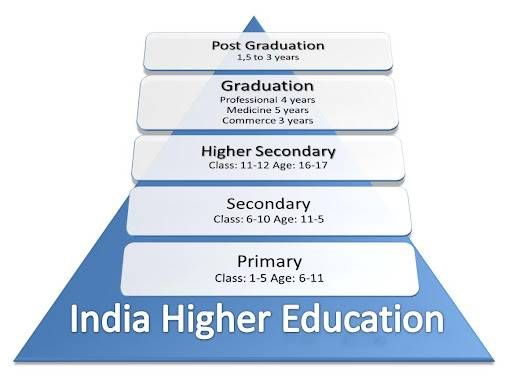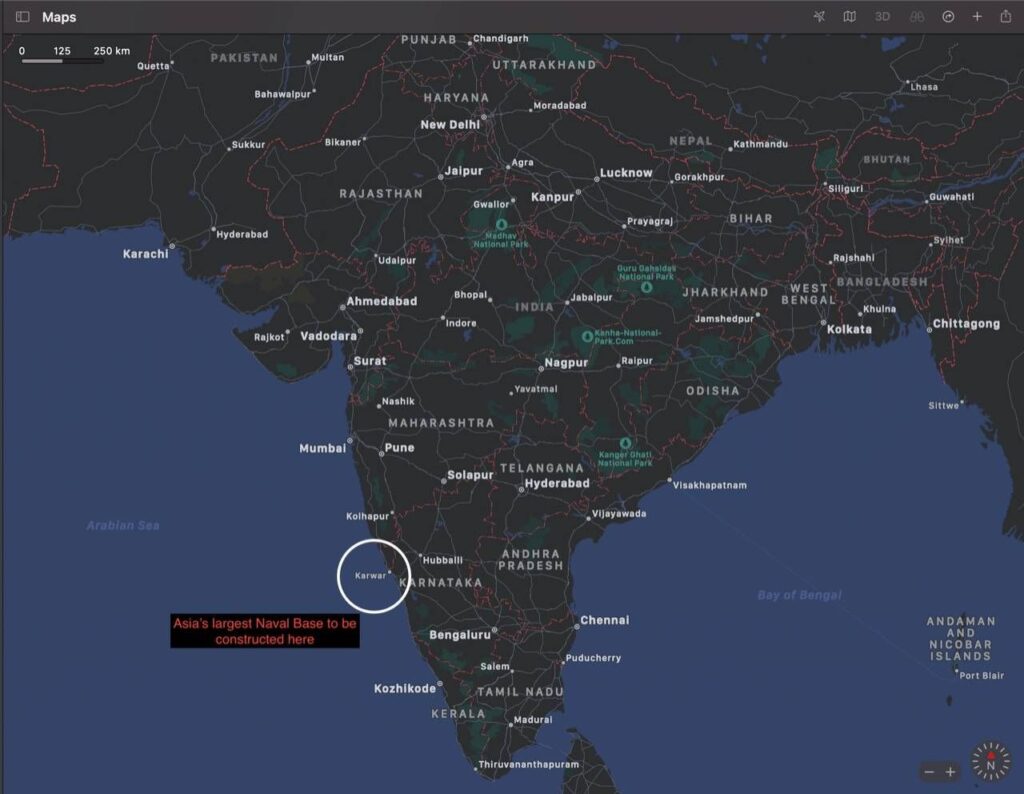Remember Swades, a classic. SRK plays an Indian expatriate NASA scientist Mohan Bhargav who travels to India to meet his nanny but gets affected by the condition in which the people of his country had been living for years, without electricity, without food or money and decides to stay back and work for their upliftment. If you haven’t seen it, well you’ve been living under a rock. It had such an impact on people that many Indian engineers and scientists had actually returned to India. But we are not here to talk about movies and stuff. We are here to address a question that lies beneath the storyline of this film. A question that should be asked every time a new innovation takes place and we take pride in a majority of the scientists and engineers being of Indian origin. The question is Why do many Indian Scientists and Engineers leave India? Let’s find out.
The problem of research and development in India is a major hurdle in its path to becoming a global superpower. The lack of innovation in different sectors affects us badly. Let’s understand this with an example. The Indian Space Research Organisation (ISRO) had launched the Mars Orbiter Mission or the “Mangalyan” in 2012 that was launched on November 5th 2013, reached Mars on 24th September 2014 and has been sending important data since then. The project was a big leap forward for ISRO and India in space exploration. Big talks about the cost-effectiveness of the project and reaching Mars in its first attempt had gained a lot of attraction. But what happened there. We have not been able to carry out any other Mars mission. China, our biggest nemesis, started its Mars mission years after India and successfully launched its Zhurong rover on May 15th, 2021, becoming the first country to launch an orbiter, lander and a rover on Mars in its first attempt. China has also launched its own space station in the lower earth. The manufacturing hub of the world, China has extensively worked on its R&D which has given her a boost in becoming the new superpower of the world. So where does India stand on the global picture? Where does it stand on the race of global domination, on the race of becoming a superpower? We will be trying to understand this over the course of this blog.
If we talk about some numbers India spends around 0.9% of its GDP on research and development as compared to Israel’s 4.53%, Sweden’s 3.73% Finland’s 3.45% and well, China’s 2.4%. Reports suggest that China’s expenditure on its R&D is going to increase by 7% per year till at least 2025. But what’s interesting here is that around 1996, the share of GDP on R&D for both India and China was the same but has increased drastically since then with India being stagnant on this number for the last two decades. India has around 300 R&D personnel per million population as compared to 1366 in Brazil, 2358 in China, 6996 in Germany and Iceland with the best figures of 10073 per million population. But this is not the whole picture. Data compiled by the Department of Science and Technology (DST) of the government of India suggests that between the years 2005-06 and 2017-18, 5.1 lakh patents were filed out of which 76% were from ‘foreign residents abroad’ and 24% were from Indian citizens. India files around 15 thousand research papers in 2017 while China in the same year filed 1.24 million of them. But the number of researches submitted is not the benchmark of innovation. The quality of Indian research papers is amongst the worst in the world. Indian research papers are very short on citations which affect the credibility of the paper.
Higher-Education in India:

The condition of PhDs in India is another major issue to talk about. Getting a PhD in India is not driven by research or a quest for knowledge but is seen as a medium for career advancement. The sole agenda of the doctorate students is to get a PhD which will help them to get a teaching job in government universities and colleges which pays well. It is mandatory for the PhD students to publish in peer-reviewed journals in order to get their degree. Also as per the Academic Performance Indicator (API) regulations of the UGC, it has become compulsory for every teacher in higher-education institutes to publish a research paper for career advancement. This has resulted in many fake journals being published. A study revealed that 35% of the fake journals between the year 2010 to 2014 were from Indians. Many senior professors started receiving e-mails from journals that claimed to be “international”, “global” and “reputed”. Later it was found out that many of them had fallen prey to these publications and this system of predatory publications has crept into the higher-education circle. The UGC in 2018 had decided to review the journals of the past 10 years when several concerns were raised regarding the quality of the papers and also to check for the fake journals. There is no central plagiarism system in India that would check for any research material that has been copied from foreign journals. Paraphrased statements have become a key feature of Indian journals. The UGC, in order to check this problem, decided to remove the API regulation for college teachers. In November 2018, it introduced the Consortium for Academic Research and Ethics (CARE) under which the researchers will be guided about the ethical aspects of conducting research. It will also be setting up a four-point credit system for better evaluation of the research papers submitted. But that’s not all. The PhD culture in India needs to be reformed as well. “I would not recommend that anyone does a PhD, at least not in India. It is not worth the effort unless you are lucky to manage a job in a government institution.”, said a women PhD scholar in an interview in 2018. UGC had also come up with the “tenure track system”. Under this system the performance of a new assistant professor joining any college or university will be checked over a period of five years and based on that evaluation, it will be determined that he/she is worthy of having a permanent position in the institute. This system was adopted so that only those who are genuinely interested in research and development will spend so much time and effort and they should only have the opportunities for further help. But this also faced some backlash as many people argued that this will only cause more insecurity among the newly appointed professors. There is no guarantee of a permanent job after the completion of the tenure and also this might force them to take up old and simple topics for their research work just for the sake of completing the tenure. It will lead to quick publications rather than a well researched or meaningful one.
When a student enrols in a PhD course, they work under a faculty member who acts as a mentor and helps them with their research and ultimately guides them throughout the whole process for about four to five years. At least that’s how it should work. In the majority of cases, the scholars carry out a lot of household errands work their guides. “I have run every errand possible for my guide. Shadow-writing books and research papers for her; booking tickets for her family vacation; carrying home-cooked food for her; visiting banks and post offices…” a PhD pursuing woman reveals (name not mentioned). In India, instead of working together on problems that concern the research, students are made to do personal chores over the years which hinders their approach to the research work. Pursuing PhD is a tedious job. Long hours of concentrated study is required, finding solutions to different problems and a comprehensive study about the topic requires a lot of dedication and hard work. Other countries are way ahead in bringing out new discoveries in their research while most of our work deals with papers on the same topics over and over again just for the sake of publication. Students end up copying foreign journals, publishing papers with a minimum citation or even worse, buying a PhD degree. One can also not hide from the fact that the people who actually work their way to get the degree eventually move to the USA or the European countries for some better opportunities. We have to focus on the quality and the relevance in order to enhance the curriculum of education.
Need for R&D boost in Defence Industry:
A strong military is one of the most important aspect of the roadmap to becoming a superpower. Fortunately, India has one of the best military in the world. Indian army is one of the best when it comes to land to land combat and is highly efficient in battle in extreme terrains and weather conditions. But there is a scope for improvement. Present geopolitical conditions for India are very serious. With China on one side and Pakistan on the other, it becomes very important to provide as much assistance to our forces as possible. The financial year 2021-2022 allocated 4.78 lakh crores which is around 1.4% more than the last year’s 4.71 lakh crore. Furthermore, the capital expenditure for modernisation took a hike of 19 per cent in the year 2020-2021 from the original allocation of 1,13,734 crores. With the growing tension in the mountains of Ladakh, it was a priority for the government to provide every necessary help to the armed forces. But is allotting funds enough or more so, is the allotted fund enough?
India stands at 3rd position in the world in terms of military spending only behind the USA and China. Both countries spend large sums of money on the betterment of their military but more than the money, another important aspect of a strong military is self-reliance or Aatmanirbharta. Self-reliance on defence procurement still remains one of the major objectives of India. India spent around 4 per cent of its defence budget of 2020-2021 for research and development which is way behind the USA and China that spends 12 per cent and 20 per cent respectively. The Indian Ordnance factory, considered as the “fourth arm of defence” has not been worthy of its title. It has even failed to meet the demands of our armed forces pertaining to many quality issues and delay in the delivery of goods. Due to this India still depends on the import of equipments to meet the demands and the dream of becoming 70 per cent self-sufficient is still a long way to go. This continued reliance on foreign manufactured products will only suffice our current needs but is not very practical in the long run. Hope has knocked our door with the INS Vikrant, India’s first-ever indigenous aircraft carrier that set sail on the 8th of August this year. This has made India one of the few countries that are capable of manufacturing a fully functional aircraft carrier. India has a Russian bought INS Vikramaditya already functional and the plans for a third aircraft is in talks but is not okayed yet. With China making its influence around the Indian Ocean, it is a major step in the defence of the country. Both China and India have two functional aircraft carrier with China having two more under construction. India also has planned of building Asia’s largest naval base in Karwar, Karnataka under the “operation seabird”. This will help India to have a strategic edge in the Arabian Sea.

The Department of Military Affairs (DMA) and the Ministry of Defence (MoD) taking an evocation from the Aatmanirbhar Bharat scheme and has prepared a list of 101 military equipments on which there will be an embargo beyond the timeline that has been indicated in the list. This is a huge step as this embargo will result in a contract worth “Rs four lakh crore will be placed upon the domestic industry within the next five to seven years”, says the press release on August 8, 2020. The orders placed will not only contain weapons and artillery but also some Light Combat Helicopters (LCH) and wheeled armoured fighting vehicles (AFVs). The embargo on 69 military goods is already in effect from Dec 2020. A separate budgetary allocation of 52000 crores has been made for domestic procurement in the current financial year. The Defence Research and Development Organisation (DRDO) has released a list of 108 systems and subsystems that will be designed and manufactured in the Indian industry only.
Geopolitics is often defined as a game with no rules and the only goal is global dominance. Everyone is constantly increasing their strengths and India cannot lag behind in this race. India needs to ramp us its capabilities of research and development in every sector. This investment will prove handy in a long-term game. India needs to revamp its education curriculum and move away from the rote learning culture that is prevalent in its education system. Students need to be encouraged to take up research not as a medium to earn money but as a tool to gain knowledge and help this nation with their work. Every change needs to begin from the foundation.
References:
- Indian Military transformation in the 21st Century by Rajat Ganguly
- India’s pursuit of Self-reliance
- The importance of IAC-1, the made in India aircraft carrier The first indigenous carrier sets out to sail
- Why India lacks interest in research India’s renewed quest to improve its research quality
- Press Release, August 9, 2020
- Press Release, August 24, 2020
- UGC to review quality of PhD theses over 10 years
- Why India is striking back at predatory journals
- Tenure track system will force new faculty to pursue short-term research goals




One reply on “The Elephant in the Room: India lacking in R&D”
Full of information 👍